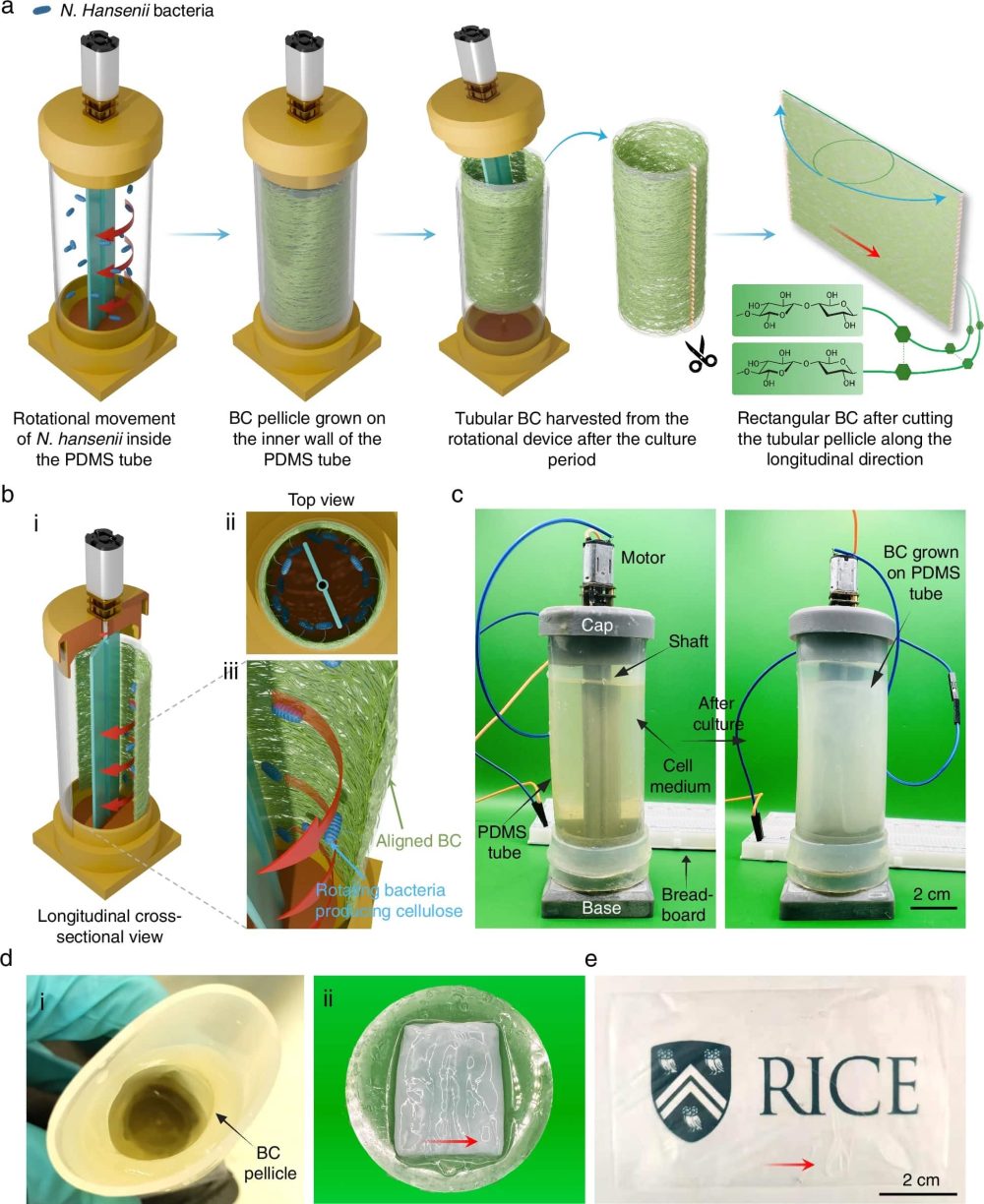In a world drowning in plastic waste and desperate for sustainable solutions, a group of scientists might have just spun up an answer.
At the University of Houston and Rice University, researchers have bioengineered a next-generation material made from bacterial cellulose that’s strong, transparent, biodegradable, and astonishingly versatile. By guiding how bacteria grow using a spinning bioreactor, they’ve transformed a humble natural polymer into a material that could challenge plastics, metals, and even glass.
The Science of Spinning Bacteria
Led by assistant professor Maksud Rahman and a multidisciplinary team, the research introduces a new way to manipulate how cellulose-producing bacteria behave. Normally, bacteria float and produce cellulose at random, resulting in a soft, flimsy material. But by placing the microbes in a custom-built rotating culture chamber, scientists forced them to align their motion, like synchronized swimmers at the microscopic level.
This alignment fundamentally changed the structure of the cellulose fibers. Instead of a loose web, the material now forms tight, organized sheets with impressive strength up to 436 megapascals, similar to low-carbon steel. Yet it remains flexible, foldable, and transparent.
Better Than Plastic, And Smarter
The researchers didn’t stop at strength. They supercharged the material with hexagonal boron nitride nanosheets, which are known for their heat-dissipation properties. The result? A hybrid material dubbed BCBN that disperses heat three times faster than regular bacterial cellulose and boasts tensile strength of up to 553 megapascals.
That means this eco-friendly biopolymer isn’t just a passive plastic alternative. It could actively cool electronics, insulate energy storage systems, and adapt to diverse industrial needs, while being compostable at the end of its life.
“We’re essentially guiding the bacteria to behave with purpose,” said doctoral researcher M.A.S.R. Saadi. “This allows us to produce aligned, multifunctional cellulose in a single step.”
A Glimpse Into a Plastic-Free Future
Published in Nature Communications, the breakthrough points to a scalable, single-step method to create strong, multifunctional materials from living systems, without relying on fossil fuels or complex synthetic chemistry.
The potential use cases are enormous: packaging, disposable water bottles, thermal wraps for electronics, medical wound dressings, biodegradable textiles, and more. In short, everything plastic was supposed to be, without the environmental curse.
“This work is an epitome of interdisciplinary science at the intersection of materials science, biology, and nanoengineering,” said Rahman. “We envision these eco-friendly cellulose sheets becoming ubiquitous, replacing plastics in various industries and helping mitigate environmental damage.”
The Bottom Line
We’ve spent decades filling landfills and oceans with indestructible waste. But with a simple spin of bacteria in the right direction, we might have found a way out. Forget petroleum-based plastics. The future could be grown, not drilled.


